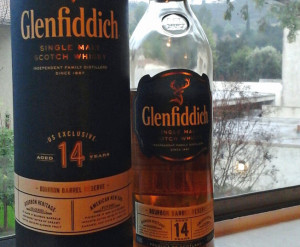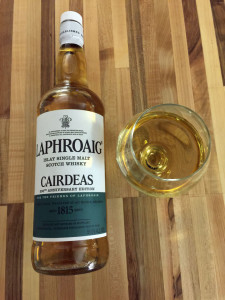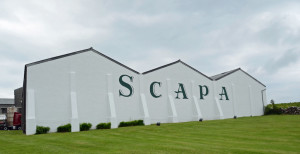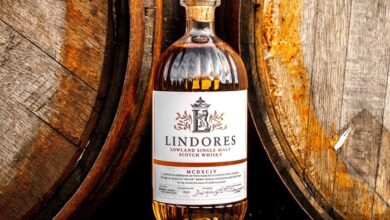Scotch Regions Guide
Understanding Scotland’s Whisky Terroirs
By Richard Thomas
Scotland is unique among the world’s whiskey-making countries because, first and foremost, it has a well-established concept of terroir. This is truly a characteristic in world whiskey known only to Scotland, and Scotland alone.
After all, Japan has adapted the Scottish style so well that it produces single malts as good as anything found in the home country today, but only Scotland has whisky regions. Meaning several distinctive areas, each with its own sense of identity. In the future the United States might join Scotland, as the American craft distilling movement expands whiskey-making beyond the bedrock sister states of Kentucky and Tennessee. For the time being, though, it’s just Scotland that can claim a real range of terroir.
Five regions are widely recognized, including by the Scotch Whisky Association (SWA), the Scotch industry’s official trade agency: Speyside, Islay, Lowlands, Highlands and Campbeltown. A sixth region, The Islands, refers to those other Scottish isles excluding Islay. However, this region is unofficial, and is technically a sub-category within The Highlands.
Speyside
The most substantial of Scotland’s whisky regions is Speyside, home to over half of all the distilleries in Scotland. This is the region hosting the two distilleries that sell more than a million cases of single malt a year, Glenlivet and Glenfiddich, as well as to prestigious names like Balvenie, Glenfarclas and Macallan.

(Credit: Debbie Shocair)
Part of the problem with this region of winding rivers and scenic glens is how it’s sheer numbers—over fifty active distilleries—give it a range that makes it hard to pin down its characteristics. The most common denominator for Speyside is that it’s where the sweet single malts come from, and these generally break down into the light and floral or heavy and sherried whiskies.
Yet Speyside also produces peated whiskies, and even the most expert must delve into minutiae to demonstrate how Speyside is truly distinctive from the other regions. While not expansive in terms of territory (most of it lies between Aberdeen and Inverness), Speyside’s reach within Scotch Whisky makes it the kind of place where one finds most everything that makes Scotch what it is.
Islay
Pronounced “Ilse-La,” this famous whisky region is also, paradoxically, the one that gets its name most savaged by non-Scots. The small island is home to eight distilleries, with new additions on the way in the near future. All eight are esteemed within whisky circles, and some are famed more generally: Ardbeg, Bowmore, Bruichladdich, Bunnahabhain, Caol Ila, Kilchoman, Laphroaig and Lagavulin.

(Credit: John Rayls)
What makes Islay famous is its signature style of peaty, smoky, sea sprayed malt whiskies. This is the heartland of Scotland’s smoky beasts, a veritable Mecca for peat lovers.
Campbeltown
In contrast to Speyside and Islay, the two most famed whisky-regions, Campbeltown is the most obscure. This was once the “whisky capital of Scotland,” with some 30-odd distilleries, but that was in the 19th Century. Two World Wars and a Depression hit the Kintyre Peninsula in particular very hard, eventually winnowing down the region to just two distilleries: Springbank and Glen Scotia. Glengyle reopened in 2004, making Campbeltown a region of three.
Cambeltown’s coastal environment, located just across the water from Islay, gives it similar attributes to its famous neighbor. The whiskies made here were known for their big bodied, bold flavors of briny wool and peaty smoke. This was once so much so that when quality was sacrificed in the name of mass production in the early 20th Century, critics started calling its whiskies “stinking fish.” Today’s Campbeltown malts have dialed down the peat considerably, allowing the saline, fruity and grassy aspects of their whiskies to come more to the fore.
The Lowlands
The Lowlands is the region closest to England, traditionally defined by what lies south of a line running between Dundee and Greenock (for those not intimate with Scotland’s geography, think between Glasgow and Edinburgh instead or south of Hadrian’s Wall ). Like Campbeltown, The Lowlands were hit hard by the vagaries of the 20th Century Scotch industry, and only three distilleries survived into the modern era: Auchentoshan, Bladnoch and Glenkinchie.
The region is noted for its light, mellow, and sometimes dry malts, often thought of as the best aperitif whiskies in Scotland. This light and mellow character is perhaps best reflected in Auchentoshan’s commitment to triple distillation, a predominately Irish practice that was once almost a signature of The Lowlands as well.
The Highlands
This region is north of the aforementioned line, and once embraced Speyside. It is the geographically largest of the Scotch regions, and even with Speyside chiseled off, it is the second-largest in terms of number of distilleries, including Dalmore, Glenmorangie, Oban and Old Pulteney.

(Credit: Richard Thomas)
Like Speyside, this region’s numbers give it a range that defies concise characterization. The Western Highlands produce lightly smoked whiskies; the North’s malts can be spicy and salty, and the South and East can be light and sweet. The most common element among Highland whiskies, at least on the mainland, is that they tend to be dry.
Even after having Speyside carved out and declared separate, The Highlands still begs for a further sub-division, as it includes the popularly described “Islands” region. This includes all those western and northern Scottish islands, some of which are better known outside of whisky circles than Islay, such as the Isle of Skye. The distilleries found on these islands include Highland Park, Jura, Scapa and Talisker. Perhaps the best argument for not separating The Islands out is how disparate they are, from the peppery Talisker to the elegant Arran.


